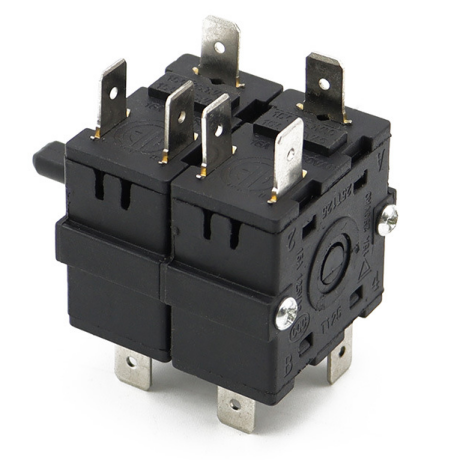Understanding Rotary Switches: Versatile Control for Modern Applications
2025-06-05
In the world of electrical and electronic control, rotary switches play a critical role. These compact yet powerful components are widely used in various applications—from household appliances and industrial machinery to audio equipment and medical devices. But what exactly is a rotary switch, and why is it so popular?

What is a Rotary Switch?
A rotary switch is a type of electromechanical switch that is operated by rotating a knob or shaft. Unlike simple toggle or push-button switches that have only two positions (on/off), rotary switches offer multiple selectable positions or circuits. Each position of the switch connects different sets of electrical contacts, allowing the user to control multiple functions with a single control point.
How Does It Work?
The internal mechanism of a rotary switch typically includes:
Rotating contact arm (rotor): Moves to connect with various stationary contacts.
Stationary contacts (poles): Each corresponds to a different circuit.
Detents or stops: Provide tactile feedback and prevent over-rotation.
Depending on the design, a rotary switch can be single-pole or multi-pole, and it may offer several throw options (i.e., the number of different positions it can connect to).
Key Features and Advantages
1. Multiple Positions: Perfect for applications requiring more than just ON/OFF functionality.
2. Space-Saving Design: Consolidates several functions into one switch.
3. User-Friendly Operation: The rotating mechanism is intuitive and easy to use.
4. Durability: Designed to withstand frequent use in demanding environments.
5. Customizable Configurations: Available in various combinations of poles and throws.
Common Applications
Rotary switches are incredibly versatile and are found in:
Home Appliances: Ovens, washing machines, and microwave settings.
Industrial Equipment: Machine tool controls, motor speed selectors.
Audio & Broadcasting: Channel selectors, impedance matching.
Medical Devices: Control panels in diagnostic and therapeutic equipment.
Test Instruments: Range selection on multimeters or oscilloscopes.
Choosing the Right Rotary Switch
When selecting a rotary switch, consider the following:
Number of positions required
Current and voltage ratings
Mounting style (panel or PCB)
Environmental conditions (temperature, moisture, etc.)
Mechanical durability (number of cycles)
Conclusion
Rotary switches offer a practical and reliable solution for multi-position switching needs. Their combination of simplicity, robustness, and versatility makes them a valuable component in countless devices and systems. Whether you're designing a new product or upgrading an old one, a well-chosen rotary switch can enhance functionality and user experience.


